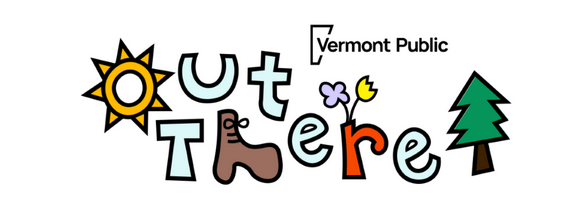This is the web version of our email newsletter, Out There! Sign up to get our monthly dose of all things environment — from creatures you might encounter on your next stroll, to a critical look at the state's energy transition, plus ways to take part in community science and a roundup of local outdoor events.
🌖 It’s Thursday, August 14. Here’s what’s on deck:
- Federal cuts to solar programs
- Managing for floods
- Deer flies
But first,
A new treatment could finally clear this lake
Starting next month, researchers will drop a cocktail of naturally-occurring chemicals from a boat in the middle of Lake Carmi, in Franklin County. The hope is that the mixture, called “alum” will suppress toxic cyanobacteria blooms at the lake for at least a decade, and maybe more.
Alum contains aluminum sulfate and sodium aluminate. It works by binding with phosphorus near the lake bottom and trapping the nutrient there. The same treatment has successfully eliminated blooms at other shallow lakes in the region. But it’s not a common practice in Vermont — the state has some of the strictest limits on alum in the country. The project is estimated to cost $3.5 million and the state is going to pick up the tab.
🤢 Lake Carmi has been plagued by cyanobacteria for years. It’s often closed from late summer into autumn. Blooms are made up of ancient bacteria (the first known organisms to use photosynthesis!) that produce toxins, which can sicken people and wildlife.
☀️ Blooms tend to occur when there’s a mixture of warm water, sunlight and excess nutrients. That’s often in the form of phosphorus. In Lake Carmi, most of that phosphorus is trapped on the lakebed, and has accumulated over years from historic runoff. State regulators say there's still more work to be done to keep new phosphorus pollution out of the lake.
🙅 Residents and the state have considered a number of other strategies. An aeration system was supposed to add more oxygen to the bottom of the lake to help trap phosphorus. But it was removed earlier this year, after it seemed to make the problem worse.
🌿 At other lakes, alum treatment has made the water more clear. That’s sometimes caused booms in aquatic plant growth, including invasive species like Eurasian milfoil.
In other news
⛅ Less money for solar: Vermont is set to lose over $60 million in federal funding that was supposed to help low-income households access solar energy. The money would have paid for more than 1,000 households to install solar panels for free or at a low cost. The Trump administration is also getting rid of tax credits for homeowners that covered about a third of the cost of rooftop solar installation.
🪰 So many deer flies: That’s the complaint many people in the region made earlier this summer. And the state entomologist confirms it was a particularly bad year, thanks to a wet spring followed by hot, humid weather. Females need to drink blood to develop their eggs. They give nasty bites but luckily, they’re not a public health threat.
🔥😷 How’s the air quality? Much of the smoke that’s been drifting over Vermont skies has come from blazes in Manitoba and Saskatchewan, which are not yet contained. This year has had a number of days with dangerous air quality when high-pressure systems have settled over the East Coast, trapping wildfire smoke. Public health experts say to regularly check the local Air Quality Index (AQI) to keep track of conditions.
🌧️ “The frontier of climate change in the Northeast”: That’s how Vermont has been described in a recent New Yorker article thanks to a number of unfortunate distinctions: Washington County has the highest number of disaster declarations of any county in the country since 2011. Annual precipitation in the state has increased six inches since the 1960s. And heavy rain events are becoming more frequent. The state is also leading efforts to create sustainable flood prevention programs.
In your backyard

Get out there
🐝🦋 Support beneficial bugs: Shelburne Farms is hosting a series of pollinator safaris every Saturday this month, August 16, 23 and 28. You’ll learn how to identify and attract these beneficial insects, and get an up close look at some pollinators in action. A group in Woodstock is also holding a conversation about pollinator gardens and plants and rewilding projects in the area on Thursday, August 28 at 6 p.m.
🎨 Sketch local species: Learn about illustrating subjects from the natural world and take a hike to get inspired at the Watershed Species Illustration Workshop at the Green Mountain Club on Sunday, August 24 at 10 a.m.
🌳 Consider the trees: Join a Vermont Master Naturalist for a tour of the Audubon natural area in Huntington with a special emphasis on learning about tree identification and the history of Vermont’s forests. Wednesday, August 20 at 1 p.m for $15.
Credits: This week’s edition was put together by Lexi Krupp and Zoe McDonald with lots of help from the Vermont Public team, including graphics by Laura Nakasaka. Editing by Stephanie Colombini.






